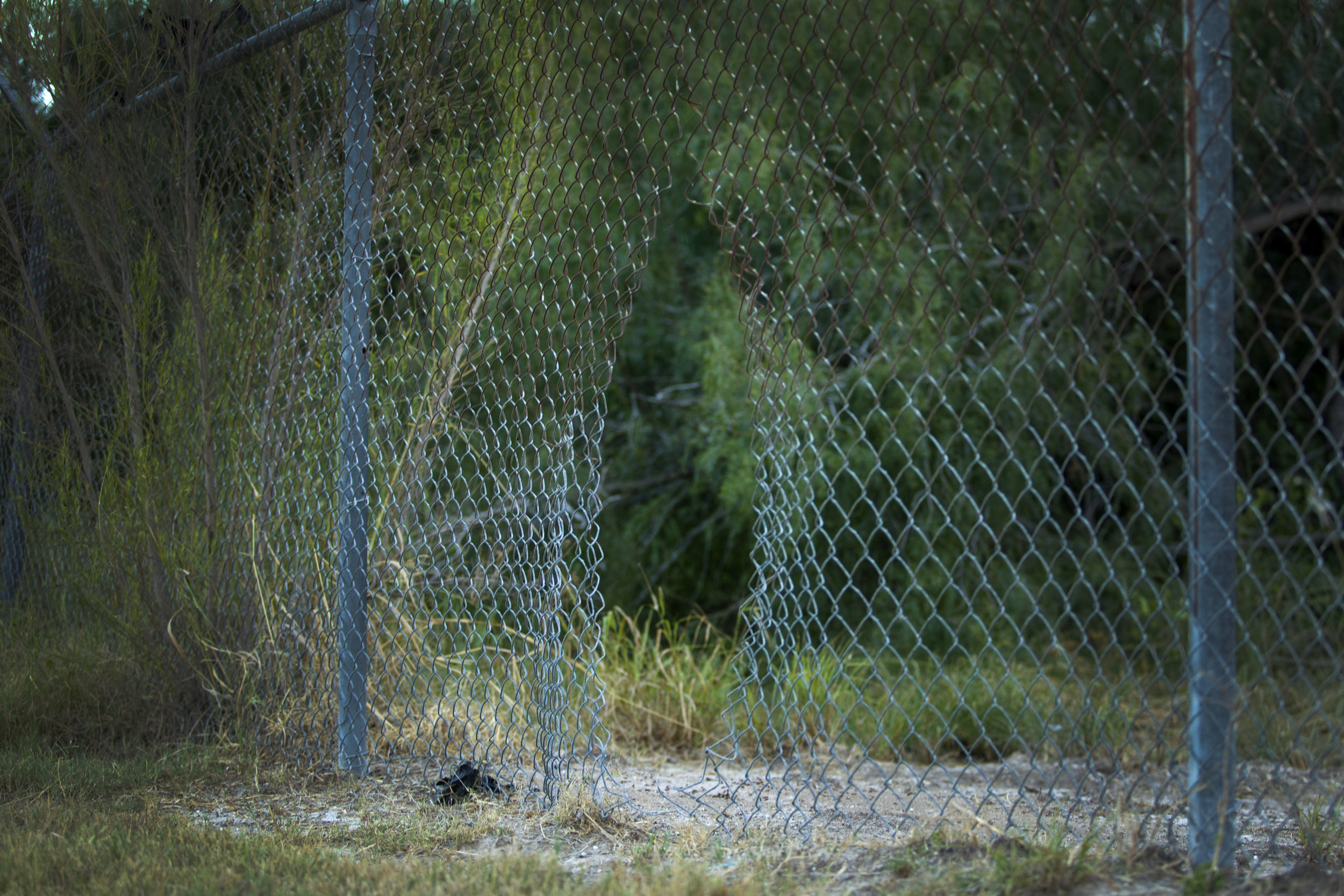La Frontera
2018: The year of zero tolerance, family separations and migrant caravans. Immigration has become a political tool, and the nation is drawing sides. But for residents of the Rio Grande Valley, migration is more than an election. Migration is omnipresent. It does not ebb and flow with the tides of politics; it is embedded in the lives of people who live there. / For KUT Austin’s La Frontera project.

A family of asylum-seekers from Cuba wait with their nine-month-old child to cross into the United States on the Gateway International Bridge.

Asylum-seekers wait to cross into the United States on the Gateway International Bridge.

Migrants cross the border into the U.S. looking for Border Patrol. Once they turn themselves in, they plan to seek asylum in the United States.

Migrants gather their belongings to turn over to Border Patrol.

Migrants from Honduras are apprehended after crossing the Rio Grande into the U.S. looking for Border Patrol. Once they turn themselves in, they plan to seek asylum in the United States.

Border Patrol agent Rodriguez patrols in the morning.

Elisa Fillipone makes frequent trips across the Gateway International Bridge and the B&M Bridge to take supplies to asylum seekers waiting to cross into the United States. Fillipone is part of the grassroots organization, Angry Tías & Abuelas. The group formed when the separation of families crossing into the U.S. began under the announcement of the Trump administration's "zero tolerance" policy.

A group of Eritrean migrants wait to cross the border into the U.S. at the foot of the Gateway International Bridge. The group reported having waited ten days, watching other asylum-seekers jump ahead of them in line. They hear of a list of names being kept by Mexican officials, and hope they will be called soon to cross.

Edale waits to cross the border into the U.S. at the foot of the Gateway International Bridge. He says his cross gives him strength. "You can't come on this road without God," he says. From To escape Eritrea, he flew to Brazil, then made his way by bus to Peru, Ecuador, Colombia, Panama, Costa Rica, Nicaragua, Honduras, Guatemala, and Mexico, traveling through ten countries in total.

The Rio Grande passes under the Gateway International Bridge between Brownsville and Matamoros, Mexico.

Border Patrol agents apprehend a group of migrants along the U.S.-Mexico border.

A family of asylum-seekers from Oaxaca, Mexico wait to enter the U.S. at the foot of the Gateway International Bridge. The family reports to have fled due to the murder of a family member by a gang in their hometown.

Border Patrol agent Robert Rodriguez fills out paperwork after apprehending migrants that just crossed the Rio Grande.

Migrants cross the border into the U.S. looking for Border Patrol. Once they turn themselves in, they plan to seek asylum in the United States.

Across the Rio Grande, a dilapidated house serves as a base for counterintelligence who keep watch over Border Patrol for river-crossers.

Border Patrol agent Jason Breeden patrols near the Anzalduas International Bridge.

A hole cut in fencing near the Anzalduas International Bridge, spotted by Border Patrol.

Pamela Taylor lives along the Rio Grande River on the U.S. side, but has been separated from the rest of Brownsville by existing border fence.

Cotton fields near the U.S.-Mexico border.

ICE drops off newly released detainees at the Greyhound bus station, where they will take public transportation to different locations across the U.S., reuniting with family while awaiting court hearings that will determine their eligibility to stay in the U.S. under political asylum.

Hnuar Lopez (left), Salvador Lopez (center), and his brother, Jose Heriberto Lopez Chavez (right) clarify their ICE documents with Elizabeth Cavasos (far left), a volunteer with Angry Tías & Abuelas. Asylum seekers will take public transportation to different locations across the U.S., reuniting with family while awaiting court hearings that will determine their eligibility to stay in the U.S. under political asylum.

Salvador Lopez secures a plastic beaded rosary around the neck of his son, Hnuar Lopez. Asylum seekers wait at the Greyhound bus station, where they will take public transportation to different locations across the U.S., reuniting with family while awaiting court hearings that will determine their eligibility to stay in the U.S. under political asylum.

The border wall breaks for a driveway leading to the Lower Rio Grande Valley Sierra Club, which lies on U.S. land cut off by the wall.
